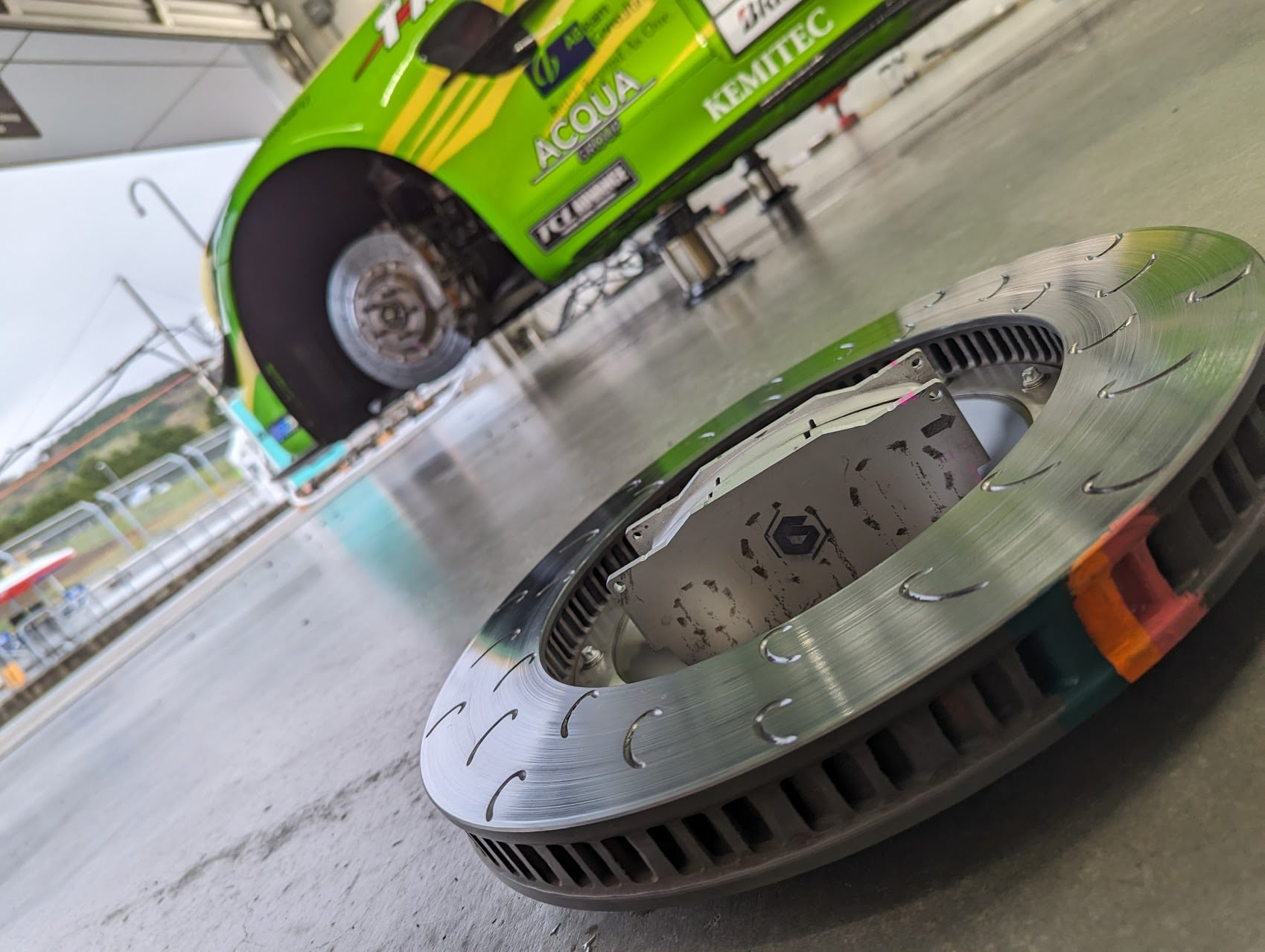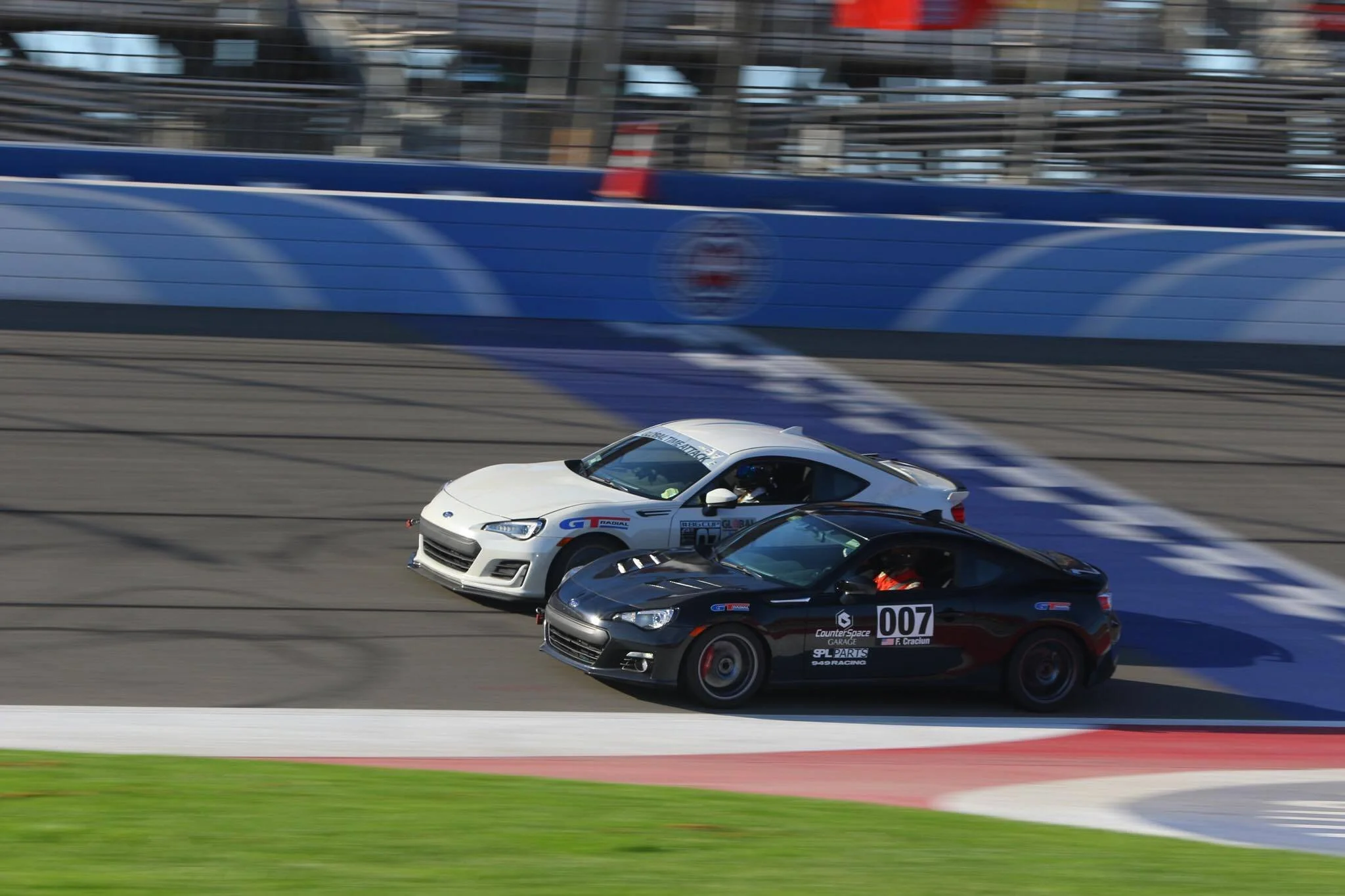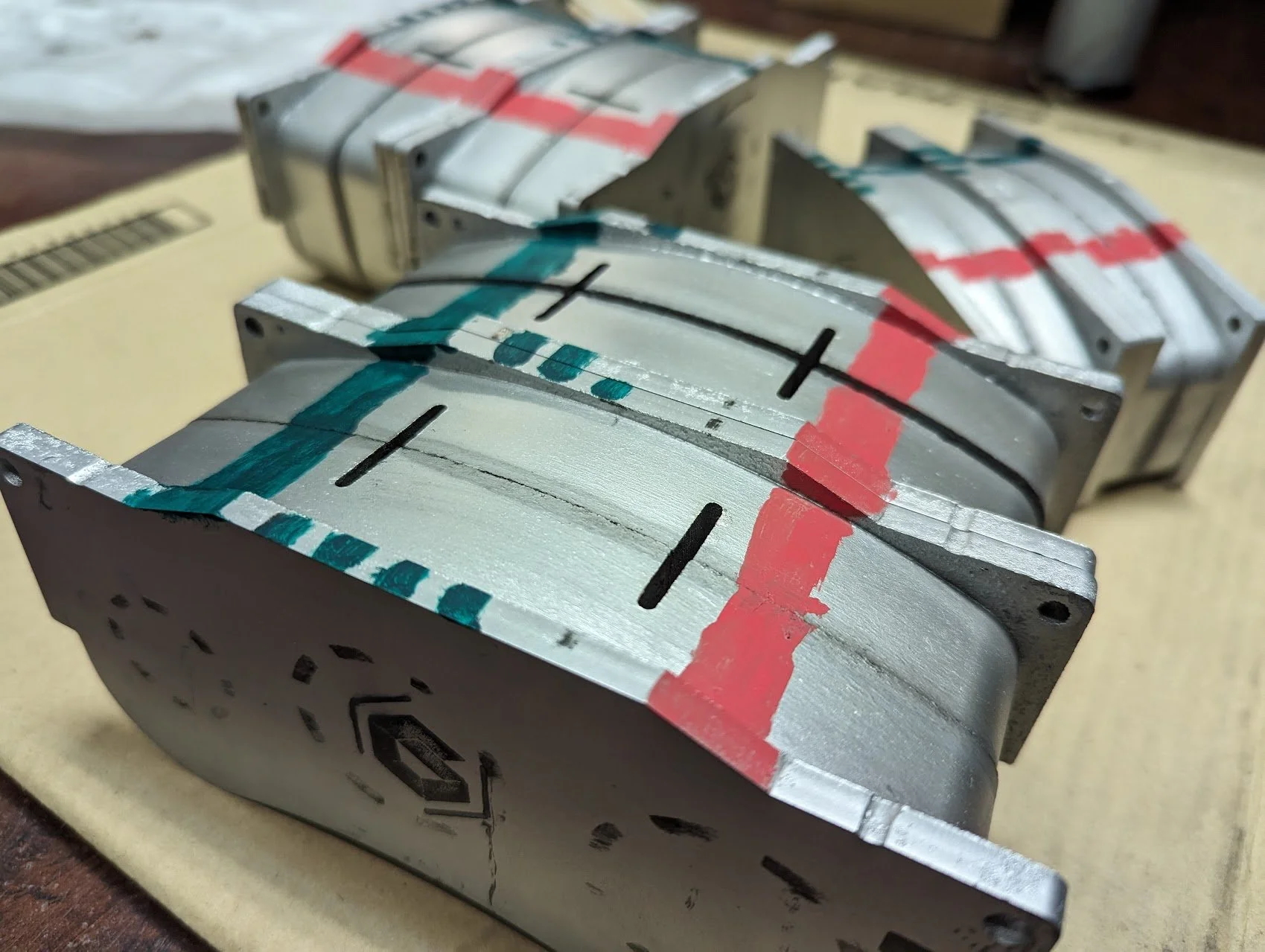CSG Brake Pads: Details Make the Difference
Much like tire technology has evolved rapidly in the last several decades, so has brake technology. There are hundreds of brake compounds produced all over the world, and the majority of off-the-shelf brake compounds offered decades ago still exist today. These compounds that may have been great in the past may not be ideal for today’s performance requirements.
CounterSpace Garage have tried to make their mark by putting together a detailed, comprehensive understanding of the entire braking system (across numerous makes and models) as well as the general demands of the entire racing landscape. After spending years testing hundreds of discs, fluids, compounds, and calipers to identify their respective limitations, they’ve been able to satisfy a wide array of performance cars, tracks, and tire compounds.
Contrary to popular opinion, outright braking performance is only one part of the puzzle. Not only are CSG concerned with improving the pad’s outright performance, but they also think about pad control and the context in which the pad will be used. If a pad isn’t suited to the driver’s preferences or the car’s limitations, it will never be used to its full.
To improve control, maintaining consistency is paramount. If the brake pad breaks down, then it snowballs into fluid failure, excessive caliper flex, and excessive disc wear. Consistency also means friction characteristics at different pressure applications, pad modulus through the temperature range, and performance from fresh to the backing plate.
Expending Energy Efficiently
Aiming for a consistent friction material often yields higher pad stiffness, which allows for a more responsive braking feel or “bite.” This doesn’t mean the brake torque is delivered in spikes, which can cause early ABS intervention, but rather with smoother engagement and smoother release. Primarily, the driver feels a more intuitive relationship between his brake application and the way his car decelerates.
Thanks to CSG's custom setup, Gary Wong enjoys reliable, reassuring braking performance in his high-horsepower heavyweight Supra.
Stiffness has secondary benefits including: better pad wear, lower overall heat generation and less heat transfer into critical components like the caliper and hydraulic fluid compared to the existing compounds on the market. A stiffer pad is usually a denser pad, and more material means more thermal capacity.
In order to understand how stiffness plays a role in response, we should use a simple physics equation with the assumption of infinitely rigid structures:
Friction Force (Ff) = Coefficient of friction (mu) x Normal Force (Fn)
This equation helps us visualize the effect of using two different sanding blocks to hold a piece of sandpaper against a sanded surface. A sponge requires more vertical force to generate the same level of friction force at the sanded surface compared to using a piece of hardwood. Now it’s obvious why having a good pad compound can result in better pedal communication and improved control over braking events — it maximizes tire adhesion and improves peak deceleration characteristics more consistently and with less force.
Tailor Made
When we’re trying to assess the level of control their particular pad offers, we consider things like: whether or not they need to build up the threshold pressure, whether they need to reduce their brake pressure carefully like with an aero car. This helps us establish the control objectives,” CSG’s David Leung notes.
“If a driver is dealing with a lot of ABS intervention, a digressive pad can help. As it limits some of that power at higher pressures, it makes it less likely to activate ABS.
Part of Gary Yeung's remarkable speed in his normally-aspirated S2000 comes down to its ability to decelerate, courtesy of CSG.
For cars with aero, a progressive pad might be best. As temperature and pressure increase, breaking power increases at an exponential rate. However, when the aero bleeds off (often very rapidly), this compound makes it easier to reduce pedal pressure quickly enough to avoid lock-up.
All of these profiles are taken into consideration to deliver what is ultimately an intuitive braking experience that allows the driver to focus on other aspects of driving and racing.
To demonstrate the ways in which driver preference factors into the equation, consider just the well-known users of the Supra A90 who’ve partnered with CSG: Jonathan Wong, Jackie Ding, Gary Wong, Allen Patten, Dave Kramer, Drew Turner, and even Toyota Engineering have turned to CSG for their own bespoke setup.”
Thermal Constraints for Different Applications
To get the most from a particular set of pads, some turn to ducting, which helps keep a brake system in its operating window. Some pads need to operate at a much lower temp to generate the performance and better wear (especially pads that generate excessive heat). High levels of heat generation also transfers into the caliper, causing them to get soft, and also transfers into the fluid.
Some pads need heat to perform, which is where ducting can be a detriment, since heat may be required for some friction materials to improve wear consistency in racing situations. Ducting also subjects a brake system to a wider spread of temperatures, which can shorten the lifespan of various components.
Viz paint is used to establish the exact thermal parameters their brakes must operate within.
Ducting does have some benefits especially when you’re operating a spec/homologated brake system that may have undersized calipers/discs (they usually get replaced after each race) and require the brakes to be regulated in a more consistent temperature range.
At the end of the day, ducting should really be a fine tuning tool, not a complete solution to resolve brake issues. It all comes down to designing for the appropriate application and optimizing the performance zone.
Maximizing Both Ends
“We also assess the rear brakes’ utilization. Regardless of whether they’re optimizing their rears to work with the factory bias or they’ve added a proportioning valve, we want the brakes to aid in slowing the car and assisting in rotation.
Jackie Ding's able to make his Supra turn like a much smaller car thanks in part to the well-chosen pads at the rear axle that facilitate usable rotation.
By maximizing the rear brakes, we can utilize the tire grip from all four corners of the car. Using tire grip from all four tires means better distribution of brake load, maximum deceleration, better wear, and better temperature management to keep the brakes in the optimal operating zone.
A Compendium for All Invested
To take every conceivable factor into consideration is how CSG has been able to develop a wide range of pad solutions. It’s also due to driver feedback and motorsport data, as shared with them by their loyal customers. This information is then filtered down into a range of solutions that meet spirited driving activities to racing at every single level between HPDE and professional racing applications.
"All relevant areas of braking performance must be understood to provide a truly premium product," David adds.
CSG have made countless strides towards finding the right products for most of today’s platforms, They’ve built a compendium of braking data over years through internal development goals, brake dyno work, interacting with their customers, and using their feedback to tailor their products to the customer’s demands. They offer a huge array for different conditions, setups, and for different driving styles.
“CSG is a premium product and the costs reflect that. With that cost, we offer free consultation since we want to meet our customer’s needs and optimize results. All we ask is that they provide data. Ideally, this comes in the form of telemetry, but onboard video, photos, and anything else that can contribute to a clearer picture of what’s happening at the track,” David adds.
The brake system is an ecosystem in itself, which is better understood through constant communication between customer and manufacturer. This interaction is the backbone of CSG’s feedback loop, and only through this and the high-quality data it relies on has high-grade deceleration been made available to drivers of all stripes.







